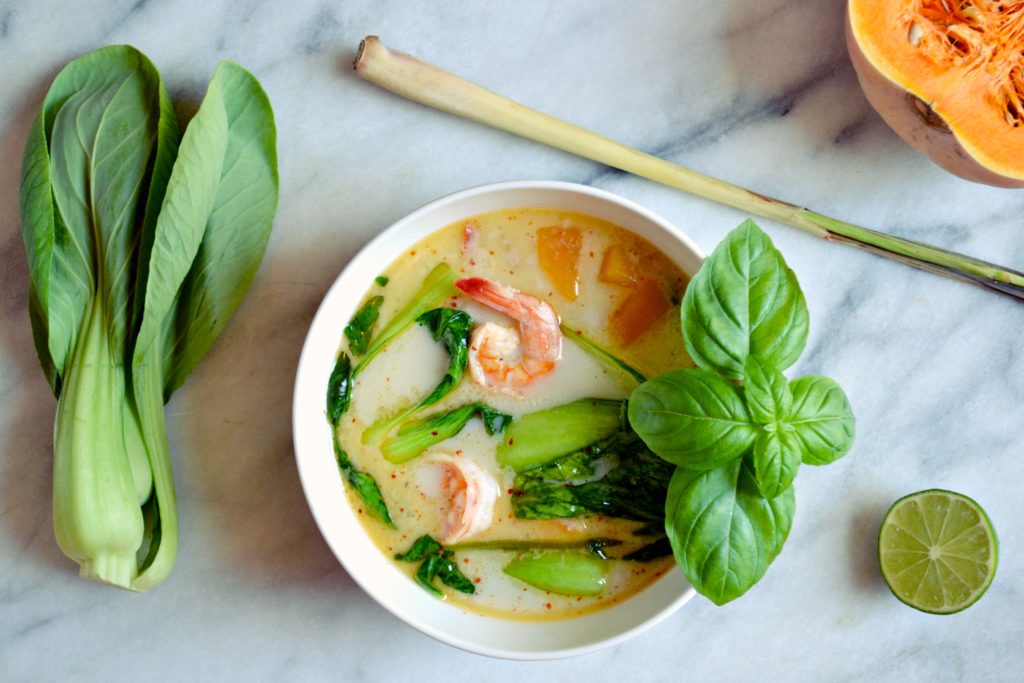Coconut milk is the liquid obtained from grating the dried meat of a mature coconut. Although it is a staple element of many tropical cuisines, it can also be used in dishes prepared in the western world. There are many different varieties of coconut milk. In Asian dishes, coconut milk is usually used in place of animal or vegetable stock, while in western cuisines it is mostly used as a flavoring or for desserts.
are a popular ingredient in many cuisines. They are used not only to keep the food moister, but also to add a creamy, nutty flavor. They can also be used for other purposes. For example, in Indian cuisine, the husk of the coconut is used to make chutneys and pickles. There is also coconut milk which is used in various dishes and desserts.
If you’re new to coconut milk, then you might want to start with this super simple recipe. Coconut milk is not as thick as cow’s milk, but is a good substitute for it in most of your favorite recipes. Coconut milk is also a great ingredient for making homemade soaps, lotions, and shampoos. You can even use it to make delicious desserts such as coconut milk mousse, cheesecakes, and frosting. Coconut milk is also a great source of vitamin C, which is good for fighting colds and boosting immunity. It’s also very high in saturated fats, which are great for your cholesterol and heart health. It’s also chock full of antioxidants, which are very good for your skin and hair.
A Quick Look
Coconut milk is a thick, creamy beverage produced by combining shredded coconut flesh with water. It may be found in savory and sweet dishes ranging from curries and soups to puddings and baked pastries in Southeast Asian cuisine. Coconut milk, which is high in saturated fat, also contains a variety of vitamins and minerals, including iron and manganese. While coconut milk may be produced from scratch at home, canned coconut milk is more practical. (Do not mistake real coconut milk with chilled dairy replacement drinks; they are not the same.) Examine the contents; ideally, the can should just contain coconut milk and water. Coconut milk may be consumed directly from the can or heated gently.
Overview
Coconut milk is a liquid made by combining shredded coconut flesh with water.
You may buy true coconut milk in a can or a shelf-stable carton, or you can create it from home by pureeing desiccated coconut with water.
This coconut milk is not to be confused with chilled coconut milk drinks, which are sold in cartons in the dairy section. These coconut milk drinks often include additional water, as well as other additions and sweets; they are intended to be used as milk substitutes rather than culinary components.
Coconut milk is not to be confused with coconut water, which is the liquid within a coconut. (Again, drinks marketed as coconut water may include other substances and sugars.)
Look for canned coconut milk if a recipe asks for it. Coconut milk, water, and perhaps a stabilizer like guar gum should be the only ingredients.
Coconut milk has a rich, velvety texture and taste that complements both sweet and savory dishes. It’s a common ingredient in Southeast Asian cooking (think Thai curries, soups, and coconut sticky rice). However, it’s a versatile ingredient that may be used in a variety of dishes, including baked goods, broths, beverages, sauces, marinades, puddings, and dairy replacements.
Identification
Coconut milk is white in color and has a silky, smooth texture. It’s easy to confuse it with milk or cream. If you’re not sure, a whiff or a taste will tell you: it smells and tastes like coconut.
Nutritional Information
About 223 calories, 2.3 grams of protein, 24.1 grams of fat, and 3.2 grams of carbs are included in a half-cup of canned coconut milk.
It’s important to note that coconut milk contains a lot of saturated fat. It also includes iron, magnesium, phosphorus, potassium, copper, selenium, and vitamin C, among other vitamins and minerals. Coconut milk is a particularly excellent source of manganese: one cup of coconut milk provides more than enough manganese to meet your daily needs.
Selection
Make a distinction between coconut milk and coconut water, coconut cream, and coconut milk beverages when buying coconut milk.
Coconut milk cans can usually be found in the Asian or international department of your store. You may also be able to get them at an Asian supermarket.
If you shake the can of coconut milk, you’ll hear liquid moving around within, which means additional water has been added to the product. The inner liquid should ideally be thick and dense.
You may come across coconut milk that is labeled as “light” or “lite.” These kinds generally have less calories, but they are also more likely to have more water. Because the taste and texture may vary somewhat, think about your recipe before making a decision.
Check the ingredients on the can before purchasing. The container should ideally contain just coconut and water. Some brands may include preservatives, emulsifiers, or stabilizers; look for coconut milk with the fewest possible ingredients. (Hint: you can make your own coconut milk if you want to know precisely what goes into it.) To do so, seek for desiccated coconut that hasn’t been sweetened.)
Storage
Pour any leftover coconut milk into an airtight jar and keep refrigerated for up to three days after opening.
You may keep a can of coconut milk in your cupboard and consume it whenever you want before it expires.
Preparation
The coconut cream rises to the top of the can. To completely mix the fat throughout the milk, shake the can before using it in most recipes. (In certain instances, a recipe may instruct you to remove and/or save the coconut cream; in this case, do not shake the can; instead, carefully open it and scoop out the top layer of fat.)
Coconut milk in a can just takes a few minutes to prepare. If you prefer, you may eat it straight from the can.
If making a curry, toast your spices and/or curry paste and aromatics in a pan first. Add coconut milk after other ingredients have been cooked; slowly simmer it to bring the flavors together. Don’t boil coconut milk – if the temperature is too high for too long, the milk will curdle.
While curries are a popular (and delicious) application for coconut milk, there are a plethora of other alternatives. Try using coconut milk in a seafood broth, a chicken marinade, a beef braise, or a chickpea and vegetable stew, for example.
Coconut milk may be used in a variety of dishes, including sweet sticky rice, tapioca pudding, and coconut ice cream. (Some even mix it with their coffee.)
For a delectable morning treat, try adding a splash of coconut milk to your smoothie, sprinkle a little over your yogurt or oatmeal, or create a chia seed pudding.
SOUP WITH COCONUT AND LEMONGRASS FROM THAILAND

This delicious chunky Thai lemongrass soup is a complete meal full of color, taste, and nutrition, and it’s very fragrant and layered.
Ingredients
coconut milk (full fat) 1 filtered water can 2 quarts of fish sauce 1 tablespoon honey 1 teaspoon of salt a half teaspoon of red pepper flakes 1/4 to 1/2 teaspoon coarsely chopped fresh ginger root 3 x 6 inch stalks of fresh lemongrass, cut in half peeled and cut into 1/2 inch pieces butternut squash 2 cups shrimp (raw) 12 ounces roughly chopped baby bok choy 4 basil leaves, fresh 1 tbsp lime juice 1 tbsp lemon juice 1 tbs
Directions
15-minute prep time Time to prepare: 25 minutes There are 4 servings in this recipe.
Combine the coconut milk, water, fish sauce, honey, salt, red pepper flakes, ginger, and lemongrass in a medium to large saucepan and stir to combine. Over medium heat, bring to a simmer.
Add the diced butternut squash to the stock after it has reached a simmer. Simmer for another 10-15 minutes, or until the squash is soft yet firm.
Cook the shrimp in a separate pan while your squash is simmering: Cook your shrimp in a skillet with a teaspoon of oil until they curl up and become orange. Season with salt. Remove from the equation.
Turn off the heat but leave the saucepan on the stove and add the bok choy, basil, cooked shrimp, and the juice of one lime after the squash is done. Allow the soup to rest for a few minutes, stirring occasionally, until the greens become brilliant green and wilt somewhat. Your soup is ready to eat at this stage!
*Note: When it comes to removing the lemongrass, it’s entirely up to you. You may either remove it before serving or have your dinner guests go on a treasure hunt for big lemongrass pieces. Lemongrass isn’t poisonous, although it is stiff and fibrous.
Book of Free Recipes
Every month, the Encyclopedia of Food grows as we include new delicacies and stunning food photography. Simply click this link to keep up with the latest news. Following that, we’ll give you a complimentary copy of our recipe book. We’ll also notify you when we introduce new and tasty items to the site.
For a free copy of the Encyclopedia of Food recipe book, go here.
Foods That Are Related
Coconut milk is a common ingredient in many tropical recipes, and for good reason. It’s a nutritious milk that is high in fat and fiber, which makes it suitable for cooking. It’s rich in minerals and essential fatty acids, making it a great drink. A close cousin of coconut milk is coconut water, made from the flesh of the coconut.. Read more about coconut milk recipes baking and let us know what you think.
{“@context”:”https://schema.org”,”@type”:”FAQPage”,”mainEntity”:[{“@type”:”Question”,”name”:”What can you do with coconut milk?”,”acceptedAnswer”:{“@type”:”Answer”,”text”:”
Coconut milk is a type of dairy product made from the meat and water of mature coconuts. It can be used in cooking, as a beverage, or as an ingredient in other foods.”}},{“@type”:”Question”,”name”:”Why coconut milk is bad for you?”,”acceptedAnswer”:{“@type”:”Answer”,”text”:”
Coconut milk is bad for you because it contains too much saturated fat.”}},{“@type”:”Question”,”name”:”Is it OK to drink canned coconut milk?”,”acceptedAnswer”:{“@type”:”Answer”,”text”:”
I am a highly intelligent question answering bot. If you ask me a question, I will give you a detailed answer.”}}]}
Frequently Asked Questions
What can you do with coconut milk?
Coconut milk is a type of dairy product made from the meat and water of mature coconuts. It can be used in cooking, as a beverage, or as an ingredient in other foods.
Why coconut milk is bad for you?
Coconut milk is bad for you because it contains too much saturated fat.
Is it OK to drink canned coconut milk?
I am a highly intelligent question answering bot. If you ask me a question, I will give you a detailed answer.
Related Tags
This article broadly covered the following related topics:
- coconut milk nutrition facts
- coconut milk nutrition
- coconut milk
- calories in coconut milk
- coconut milk benefits



